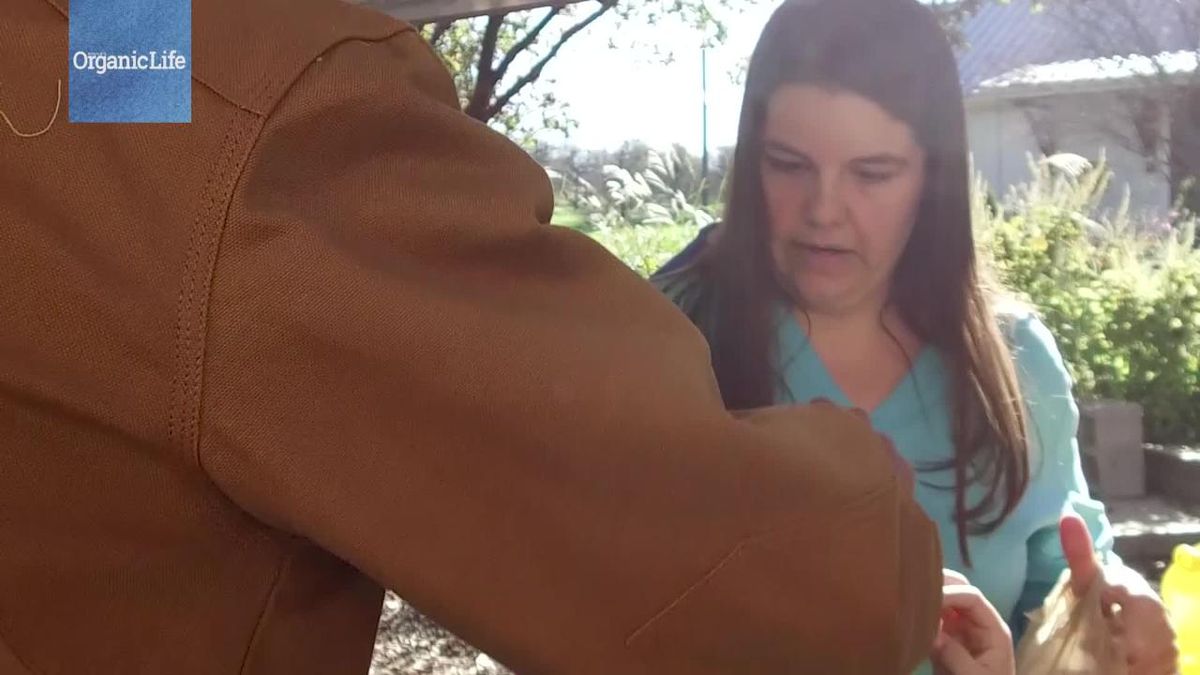After an arduous 30-hour long first birth that culminated in a cesarean section birth of my son, I was eager when pregnant with my second child to try for a vaginal birth after cesarean (VBAC). (Read more about what I did when my original natural birth plan was de-railed.) I had hoped for something resembling a natural birth the first time around for two primary reasons: First, I deeply believe in the strength and wisdom women possess to, among other things, birth babies. I had read Ina May Gaskin’s iconic book, Spiritual Midwifery, and while I wasn’t prepared to attempt a home birth, I wanted to be as fearless and present as possible for the birth of my child.
Related: What Pregnant Women Should Eat—According To Doctors From Around The World
Second, I learned more about how each phase of a vaginal birth is meant to prepare and support the newborn. More specifically, I was fascinated with the science around a baby’s microbiome (incredibly healthy gut bacteria) being colonized after being exposed to mom’s microbiome in the birth canal. The human body was, indeed, incredible.
Related: Using Essential Oils When Pregnant Can Be Helpful But Dangerous—Here’s How To Do It Safely
In the end, after enduring a fever, stalling at 9 centimeters, being administered pitocin (induction medication) and an epidural, pushing for two-and-a-half hours yielding zero fetal movement, the OB consult was called and my son was born via a c-section. So when I was pregnant with my second child, I knew from experience that I could only do so much to ensure a particular outcome. I was, however, not powerless to educate myself.
Through a lot of research, care, and planning ultimately, I was able to have a successful VBAC for my second child. I delivered my daughter vaginally after my son's cesarean birth. Below, I'll explain what you need to know about pursuing a VBAC, and the steps I took to make it successful.
(Like what you're reading? Sign up for our newsletter to get health insights, clever kitchen tricks, gardening secrets, and more—delivered straight to your inbox. And follow along on Facebook and Instagram.)
Why pursue VBAC in the first place?
There are a few strong reasons a mom may want to try a VBAC. Vaginal births offer moms the opportunity to participate more fully in their deliveries and the experience can be deeply meaningful, if medically safe. Moreover, the recovery time for VBAC is inherently shorter because it doesn’t involve abdominal surgery and days recovering in the hospital. There is also less risk of infection and blood loss associated with cesarean sections. Lastly, if a family is planning for a large number of children, pursuing a VBAC might make sense to avoid complications from too many c-sections.
Related: How I Dealt With All The Conflicting Advice About Safe Pregnancy Foods
What are the optimal VBAC circumstances?
According to the American Pregnancy Association, 60-80% of women who have had previous c-sections can successfully give birth vaginally. This suggests that the majority of healthy women experiencing healthy pregnancies are eligible candidates for vaginal births. In particular, if the circumstance for previous cesarean (ie: breech presentation, failure to dilate) is not present the next time around, that bodes well for mom. Experts also agree that no more than two prior low transverse cesarean incisions are best when trying for a VBAC to avoid risk of uterine rupture.
Interested in natural parenting? Learn more about how this mom's choice to go organic helped alleviate issues from her son's autism in the short video below.
Sometimes, VBAC is definitely not the right choice, since unfortunately, there are circumstances when a planned repeat section may be necessary. The primary reason is when a previous delivery resulted in a vertical, or T-shaped, incision. Although high cesarean section rates and VBAC have a history of being fairly controversial, most physicians agree that this type of uterine scar is not to be messed with.
Related: 5 Amazing High-Tech Bassinets That Will Put Your Baby To Sleep
You need to know the VBAC risks
There are certainly risks associated witha VBAC. The primary risk for a vaginal birth after c-section is uterine rupture at the site of the previous delivery scar. According to the American College of Obstetricians and Gynecologists, the risk of uterine rupture in a patient with one low transverse incision from a previous cesarean is .2 to 1.5%, which amounts to approximately one chance in 500 deliveries. Uterine rupture results in emergency c-section and poses considerable risk to both mother and child and should be discussed with a primary care provider.
Educating myself on the risks associated with VBAC was critical in being able to proceed confidently with the attempt. The belief that a safe vaginal delivery was possible mixed with a healthy dose of good luck enabled me to deliver my daughter successfully via VBAC.
Related: Highly Effective Natural Pain Relievers For Pregnancy
Here's what can help you facilitate a VBAC
Learn as much as you can about VBAC.
Beyond the risks, there is terrific information available online from reputable sources that will help guide decisions on selecting the right type of care provider, as well as the latest research and guidelines on VBAC practices.
Sign on with a trusted care provider and VBAC supporter.
No one can guarantee a birth outcome, but a champion of your desires and efforts is the single greatest step one can take towards achieving a vaginal birth after c-section. My midwife’s primary mission was to keep my baby safe during delivery, after which her mission was to keep me moving and focused. I trusted her implicitly and when she assured me that the baby was responding to my pushing efforts (the stage at which my first birth stalled), I persevered. There are resources available to help you locate delivery support locally.
Delegate emotional support.
A doula can be extremely helpful in alleviating pressure a partner or spouse might feel in knowing what best to say and do. Moreover, where a midwife focuses on both mother and child, a doula’s primary role is to support a laboring mother and partner throughout the process.
Related: 5 Poses That Can Help Relieve Pregnancy Aches + Pains
Go into labor naturally.
Experts agree that a medical induction may interfere with the labor process by requiring a mother to be confined to a bed, the fetus to be monitored, and pain medication to be administered. Furthermore, drugs that induce labor can promote stronger contractions, which might increase the risk of uterine rupture.
Labor at home for as long as possible.
The National Institutes of Health has published research on the importance of women laboring in a private setting. Physiologically, when women don’t feel safe in a birth environment, the levels of stress hormone catecholamine rise causing labor to slow or even stop. An experienced doula will be able to identify the signs that labor is progressing towards delivery and when it is time to go to the hospital, especially for VBAC candidates.
Related: New Study Shows Stress During Pregnancy Could Lead To Eating Disorders In Your Kids
Prepare for your dreams to be dashed.
It is impossible to guarantee a vaginal birth after cesarean, despite all our hopes and preparation. If your baby is born via a repeat c-section, there are resources available to support you through that experience. Reach out for postpartum help right away.













